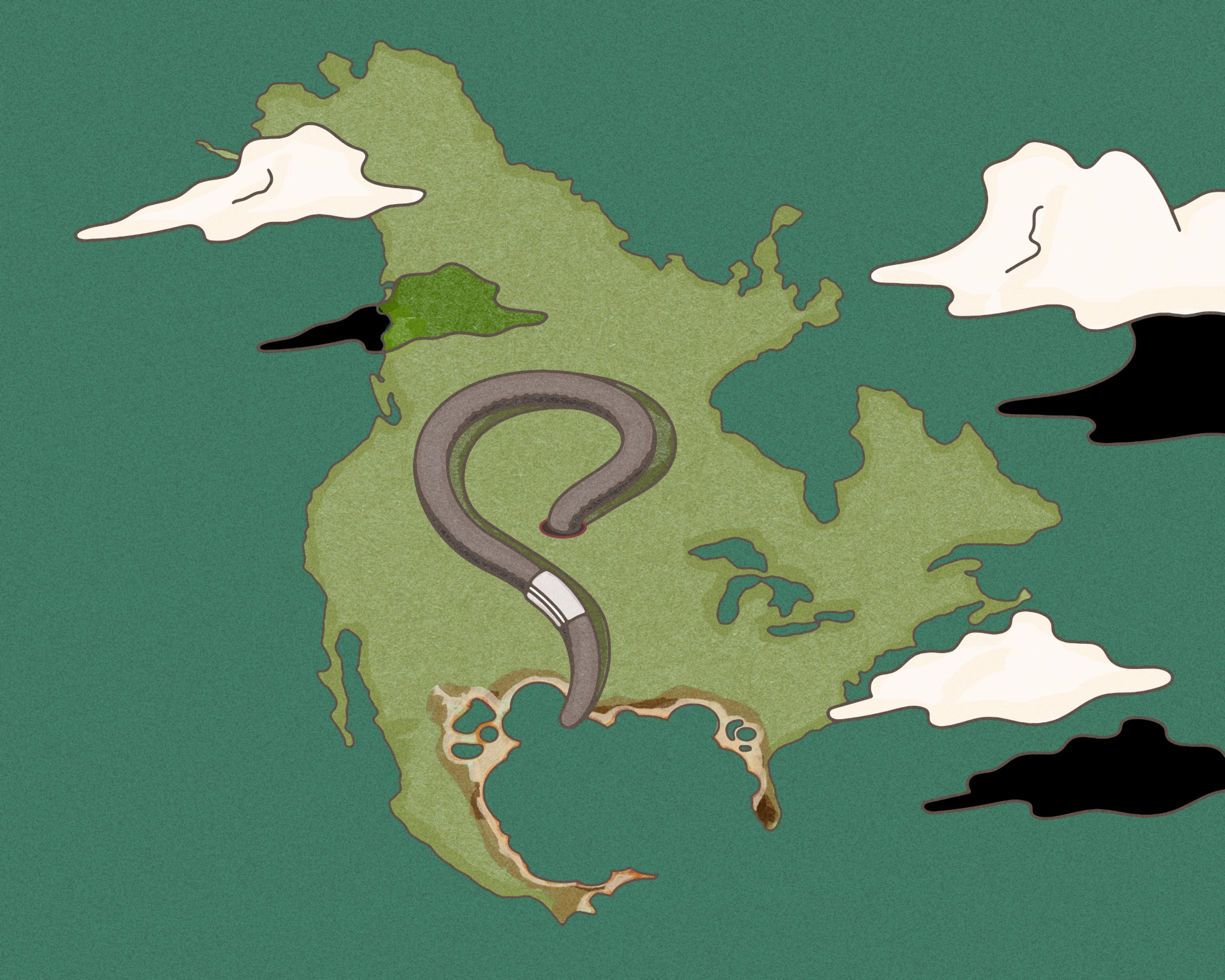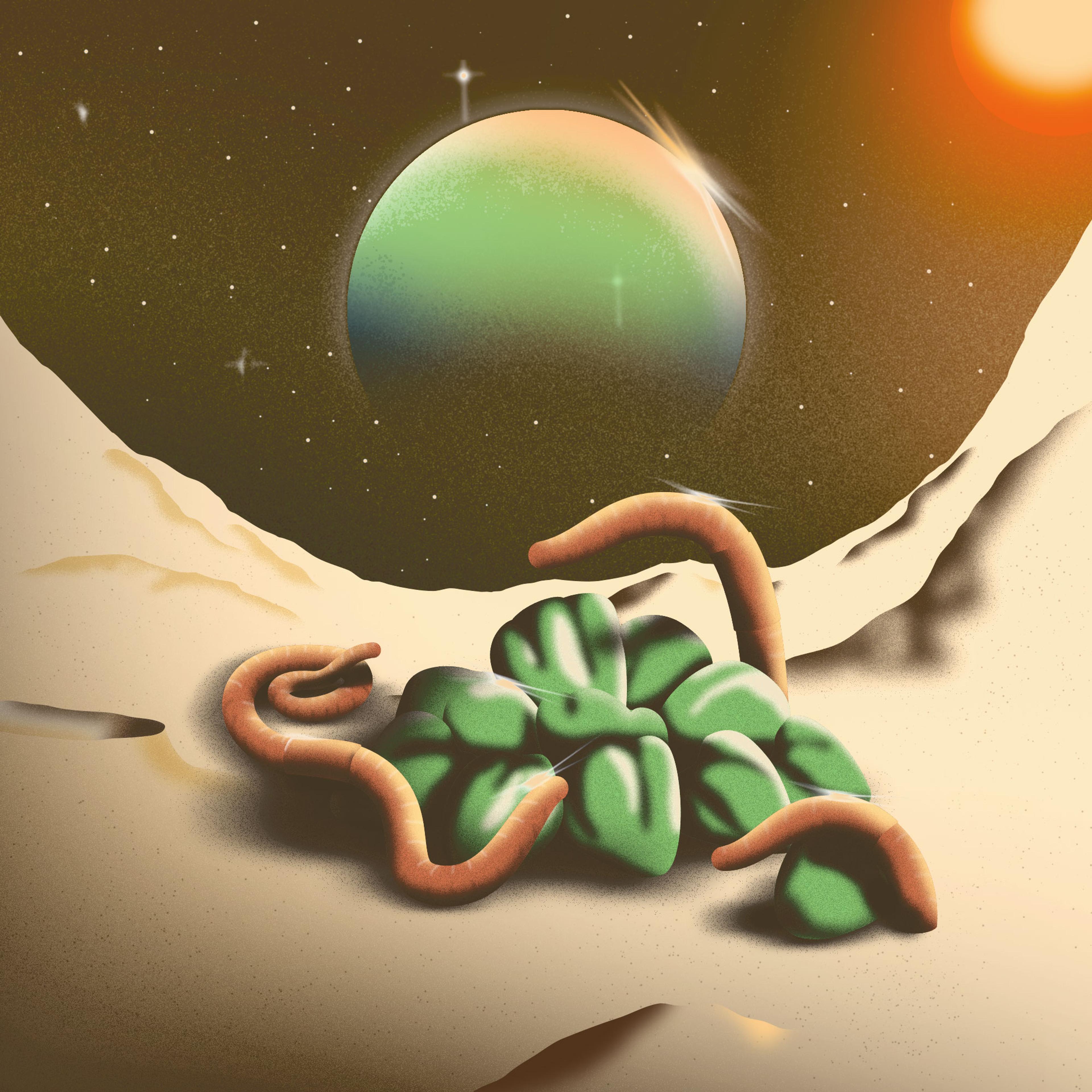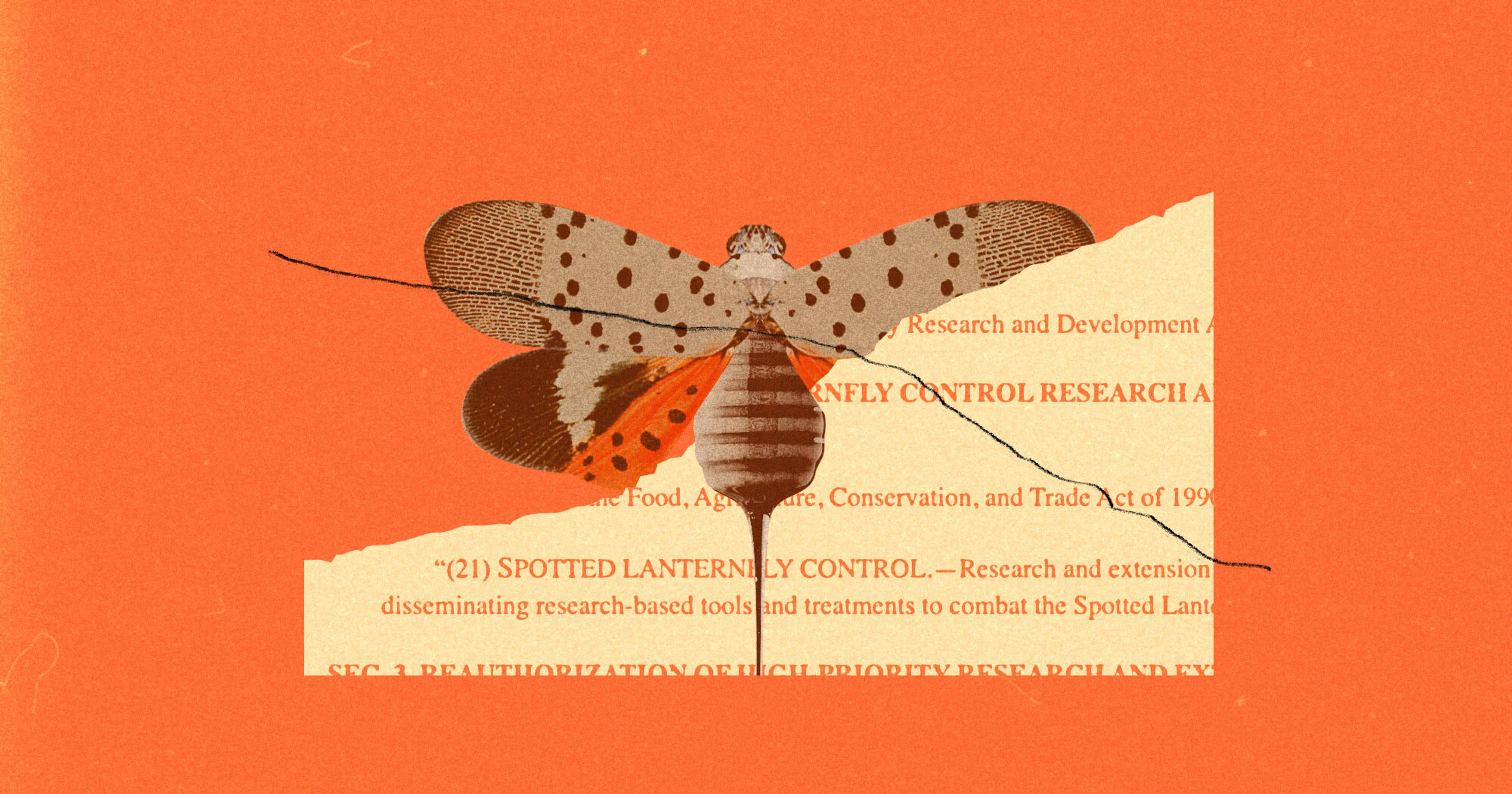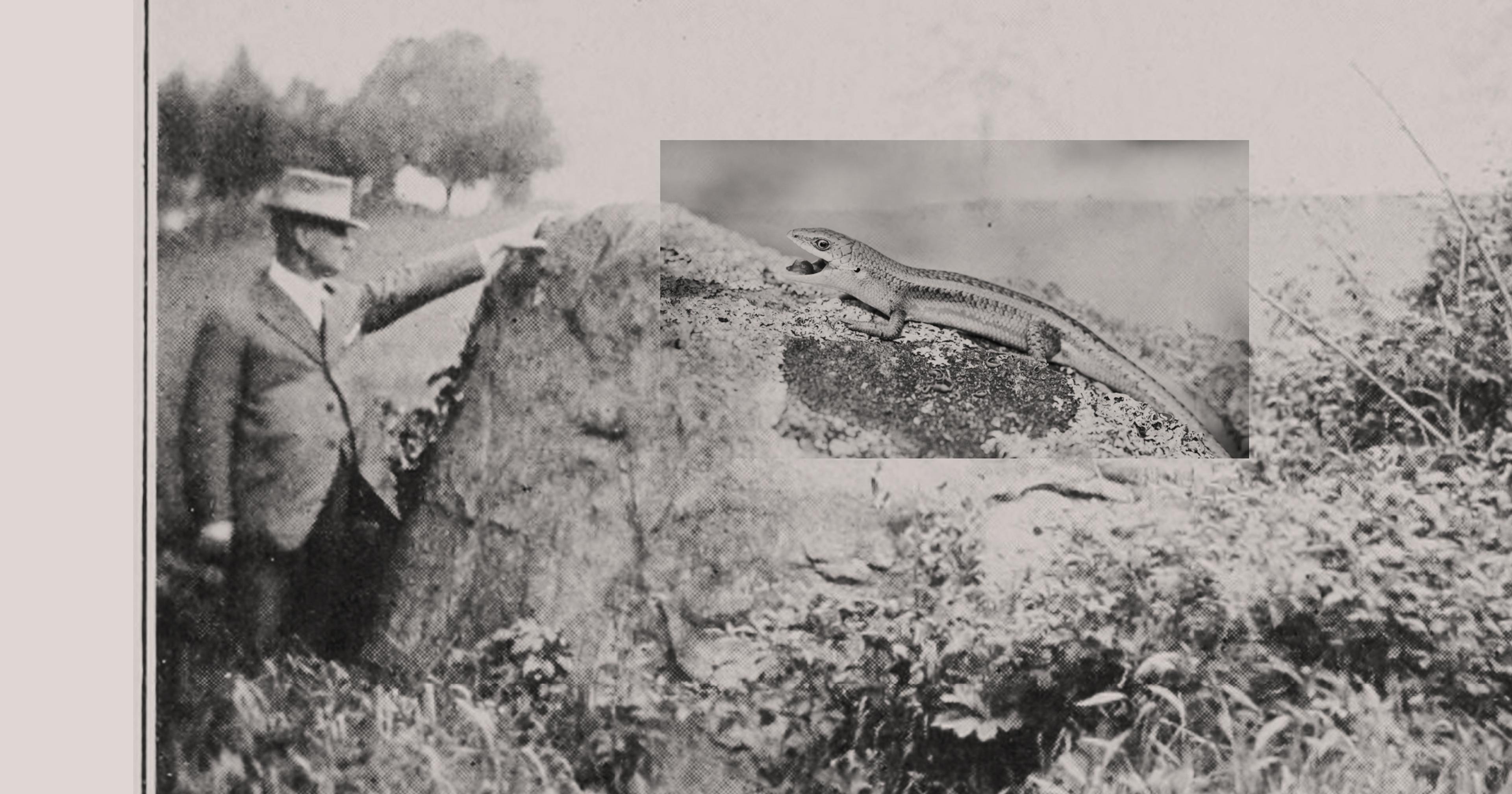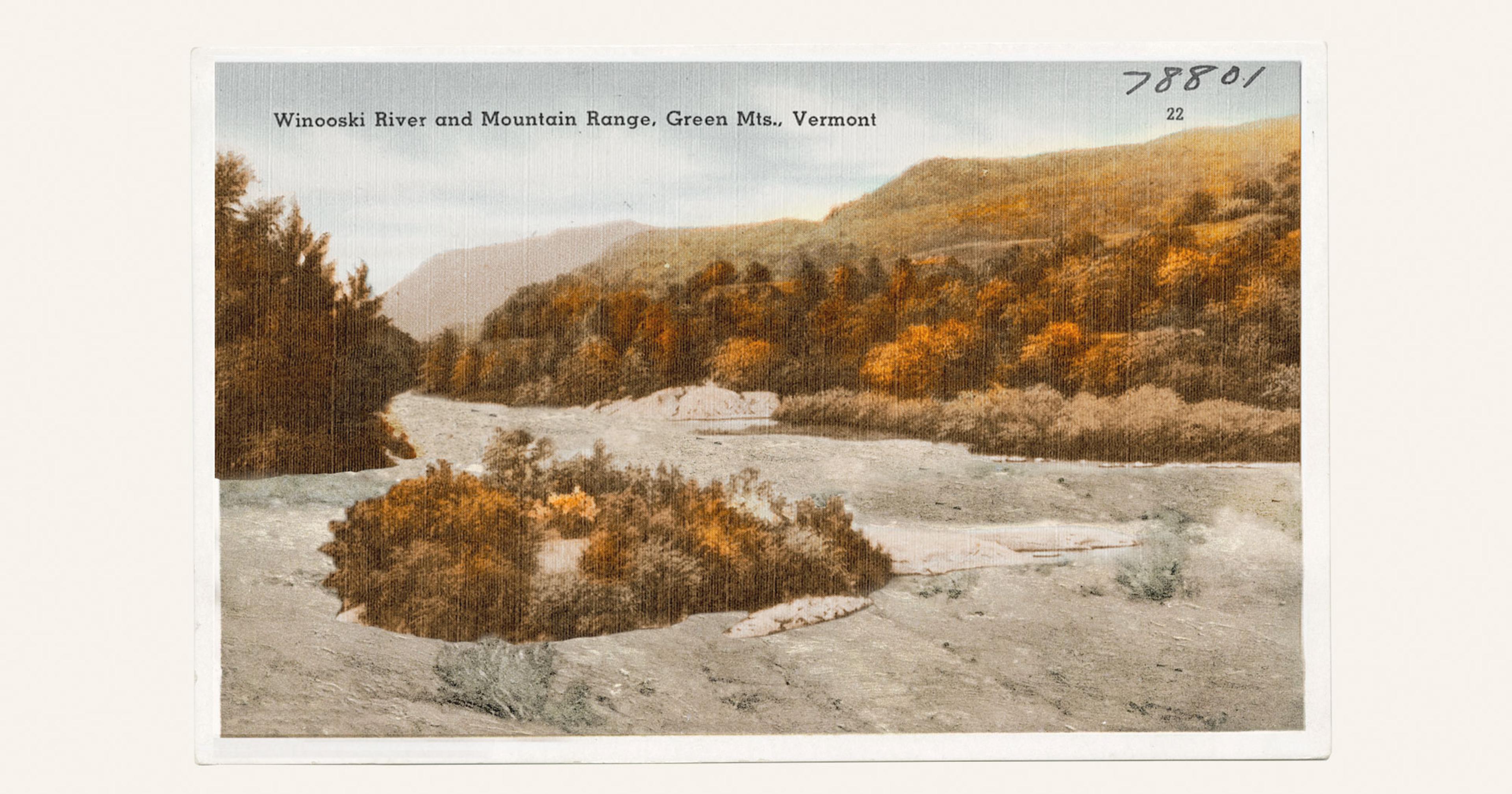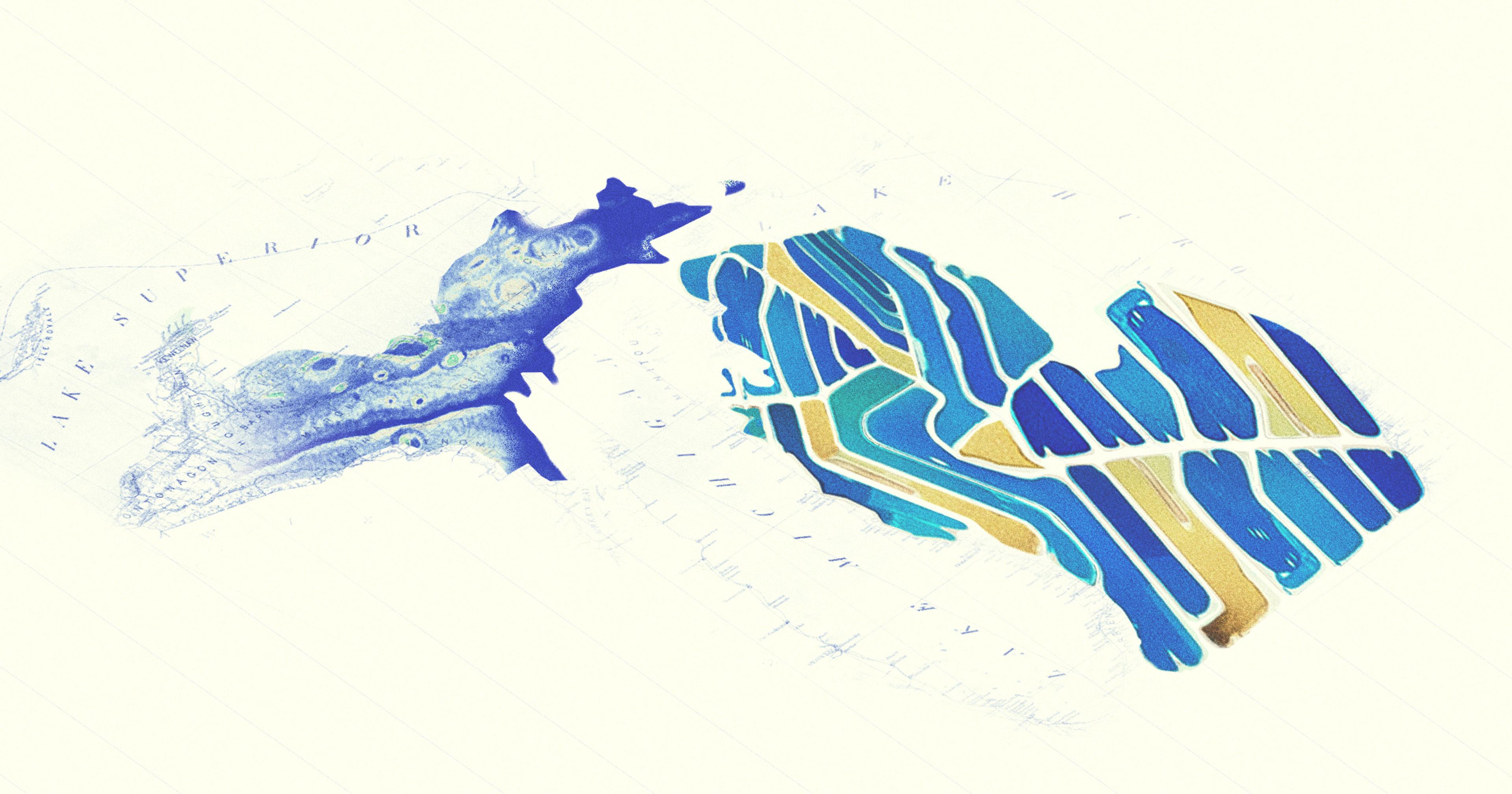Scientists are now warning about the spread of many non-native earthworm species across North America, leaving big damage in their wake.
A few years ago, Cory Krieg wasn’t particularly worried about earthworms. That’s not necessarily surprising — the little squirmers are often heralded for their ability to aerate soils and cycle nutrients, especially among gardeners, composters, and farmers. But then Krieg looked at the soil on his family’s small flower farm in Vermont.
The beds were covered in hard, compact balls, he said — these were castings, or worm poop, from an invasive, non-native species known as the “jumping worm” or “crazy worm.” Normally, earthworm castings are fairly benign, even beneficial, to soil health. But Krieg said the hard jumping worm castings make their soil unable to hold water well.
“The soil structure is so trashed,” Krieg said.
Despite the golden reputation of earthworms at large, non-native earthworms are causing trouble. While many of these introduced wrigglers are nearly indistinguishable from the many earthworm species native to North America, experts say that some of the exotic species now chewing through dirt across the continent can behave differently than native species, upending the delicate balance of soil ecosystems. And in places where there were once no earthworm species, like the forests of the Upper Midwest, the rapid invasion of earthworms has had disastrous consequences.
“Earthworm invasions are fundamentally transforming the soil, so they’re fundamentally transforming ecosystems,” said Lee Frelich, an ecologist at the University of Minnesota who’s studied invasive earthworms for about two decades. “And that affects everything.”
Earthworms can be massively beneficial in their native habitats. By chewing through the soil and detritus covering the ground, these invertebrates help recycle nutrients, aerate soils, and allow water to drain — essential functions of a thriving ecosystem.
The trouble arises when humans introduce various earthworm species to areas where they are not native. Non-native earthworms likely first began arriving in North America a few hundred years ago as Europeans began to reach the continent, said Scott Loss, an ecologist at Oklahoma State University. But over time, more and more species have shown up and colonized the U.S., Mexico, and Canada — and a recent scientific study revealed some eye-popping numbers.
According to the paper, 70 different non-native species have now made it to North America, comprising a full 23% of all known earthworm species on the continent. Jerome Mathieu, an ecologist at the Sorbonne University in France and one of the paper’s authors, saw this impact first-hand a few years ago while studying earthworms at a nature reserve outside Stanford, California. “All I found was exotic worms,” he said.
In many ways, a non-native earthworm is still just an earthworm: They chew, they poop, they’re eaten by the early bird. And in some parts of the country, non-native species may have no noticeable impact on plants or ecosystems besides becoming one more addition to the mix of critters rummaging below our feet.
“Earthworm invasions are fundamentally transforming the soil, so they’re fundamentally transforming ecosystems. And that affects everything.”
But Mathieu and his colleagues also describe how many of these non-native species play a different ecological role than the earthworms native to North America. Many native earthworms are “soil feeders,” meaning they mostly stay underground and churn through the subterranean soil. Many of the introduced species, on the other hand, are “litter feeders,” meaning they eat through the layer of fallen leaves and other material that gathers on the surface.
The biggest impact of non-native earthworms has been documented in more northern ecosystems. That’s because around 20,000 years ago, during the last Ice Age, everywhere from New York City through Montana northward was covered in a thick layer of ice. When the planet started to warm up, that ice retreated and the barren ground underneath slowly began to fill up with forests, grasslands, marshes, and lakes. Eventually, animals like moose, bears, beavers, rabbits, squirrels, fish, and birds expanded northward, too — but not North America’s native earthworms, which spread relatively slowly on their own, according to Loss.
So, while the ecosystems south of that glaciation boundary have all adapted to include earthworms in their menagerie of wildlife, the ecosystems north of that line haven’t historically had earthworms. That means any earthworm living north of the glaciation line is a non-native earthworm, even species native to other parts of North America.
It also means these forests operate at a different speed. In naturally earthworm-free ecosystems up north, decomposition tends to happen much more slowly through fungi and bacteria, Loss said. But when earthworms are introduced, that decomposition cycle kicks into overdrive as the voracious earthworms start chomping and chewing through the dirt.
Frelich said you can see the resulting changes as you track an earthworm invasion. In a non-invaded patch of forest, the leaf litter will be inches thick and spongy. Here, you may still seem small ferns growing, as well as native orchids, whose seeds can be eaten by earthworms. But as you start to cross the edge of the earthworm frontier, sometimes within just a few hundred feet, the leaf litter will start to disappear — and as you reach a fully invaded patch of land, the forest floor will often be hard and bare, with little to no leaf litter covering the ground.
These changes may cascade out to other parts of the ecosystem — one of Loss’s papers found that earthworm-invaded forest patches in the Upper Midwest had a lower density of ovenbirds (a small songbird) compared to non-invaded forest patches.
As you reach a fully invaded patch of land, the forest floor will often be hard and bare, with little to no leaf litter covering the ground.
Another species of concern in northern forests is the sugar maple. In 2017, researchers at Michigan Technological University linked the spread of non-native earthworms with crown dieback — when the canopy of a tree starts to die around the edges — in sugar maples in the Upper Midwest. Krieg and his family also have a small group of sugar maples they use for making syrup, and while he said he hasn’t yet necessarily noticed any impact from the crazy worms on the trees, he’s seen earthworms out in the woods, too.
One of the biggest spreaders of non-native earthworm species is discarded and lost fishing bait — Loss said there’s a correlation between earthworm invasions and places where people are likely to be fishing. Officials have been urging people not to buy jumping worms for use as bait or in compost, but many of the other earthworm species sold for composting and gardening are also non-native, sometimes even acknowledging their non-native status with names like “European nightcrawlers” (Dendrobaena hortensis) or “Indian blues” (Perionyx excavatus).
Fishers and composters could try to source local earthworm species instead, but earthworms might be confusingly labeled. For example, the Canadian nightcrawler (Lumbricus terrestris) — despite often being reared and sold in Canada — is likely native to Western Europe. Mathieu said that even in France, these species are often called Canadian worms.
It’s also hard for anyone, save for a trained earthworm scientist, to tell the difference between many native and non-native species based on sight alone. Not to mention, anyone using earthworms north of the glaciation line could be helping to spread invasive species into previously earthworm-free ecosystems.
There are still plenty of remaining pockets of earthworm-free land, especially the further north you go, Frelich said. And the spread could be slowed. To start, fishers could abstain from discarding unused bait outside. In addition, Loss suggests that if you have to buy earthworms for compost, try to buy Eisenia fetida, or “red wigglers.” While this species is native to Europe, they don’t seem to be very good at dispersing, he noted.
But one of the hardest obstacles to overcome in preventing the spread of non-native earthworms may be the years of goodwill that earthworms have built up as soil tenders, farm helpers, and compost heroes. “People who are aware of worms in nature, I mean, 99% of the time they say ‘Okay, I know very well ecology and worms, and I know they are very good for soil,” Mathieu said.
“So first thing I have to say is, that it’s not always true.”

